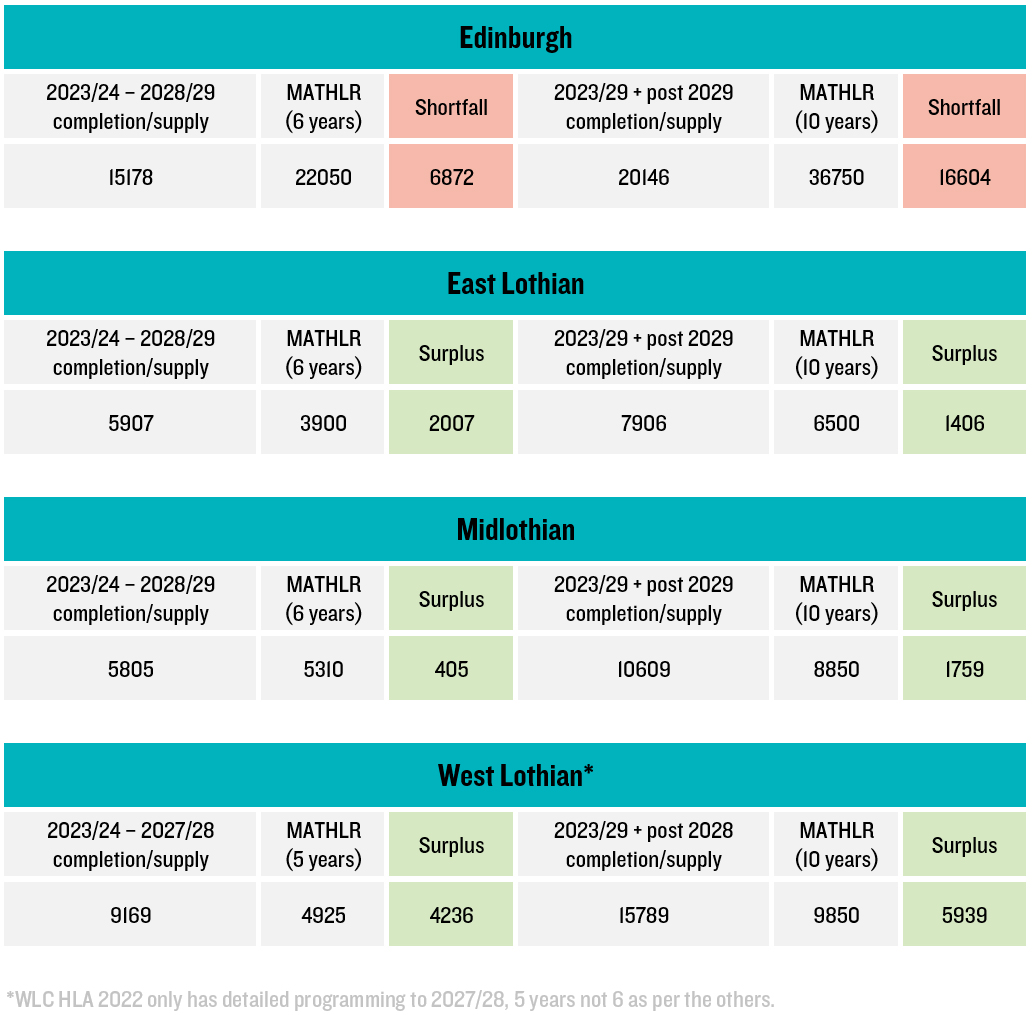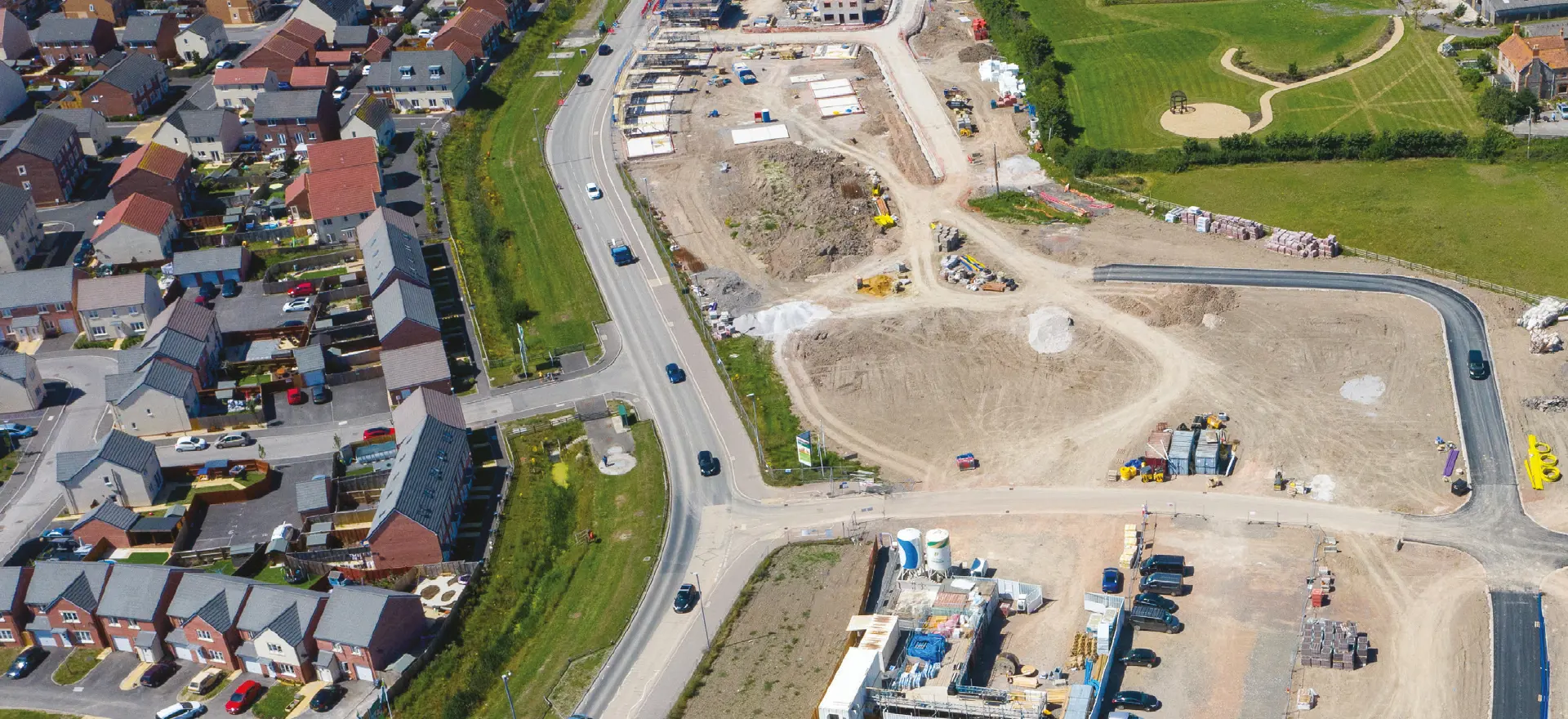“We choose the builders, not the blockers; the future, not the past; renewal not decline. We choose growth.” These were the Labour leader, Sir Keir Starmer’s words at a speech to the British Chambers of Commerce in May 2023 signalling a commitment from the Labour party to “
drive housebuilding at pace.” However, the Labour party has been in power in Wales since the Senedd was established in 1999 and homes do not appear to be being delivered at pace. In the year 2022/23
the statistics showed that the number of new houses started in Wales was the lowest (with the exception of 2020/21 which was impacted by covid 19) it has been since StatsWales started compiling statistics in 1974.
Revocation of TAN1: Joint Housing Land Availability Studies
About three years ago the Minister for Housing and Local Government, Julie James, announced that Technical Advice Note 1 (TAN1: Joint Housing Land Availability Studies) had been revoked and that the Five-Year Housing Land Supply section of Planning Policy Wales had been replaced by an interim policy statement.
See my blog from July 2020.The requirement to demonstrate a five-year housing land supply in Wales had been removed and replaced by a new method of monitoring housing delivery based on trajectories set out in Local Development Plans (LDPs). The requirement for decision makers to afford ‘substantial weight’ to the lack of housing delivery had also been withdrawn.
This signified a clear message from Welsh Government that a Plan-led approach to the delivery of homes is paramount with ‘speculative’ applications for residential development on unallocated sites outside of the settlement boundary not being looked at favourably. At face value, the new approach made it harder for such sites to be promoted.
Three years on I wanted to revisit the situation to understand how this change in policy has impacted on housing delivery. Clearly the time period since March 2020 has not been without its events, with the COVID-19 pandemic lasting until early 2022, the financial effects of Liz Truss’ mini budget in September 2022 as well as a cost-of-living crisis, soaring inflation and sharply rising interest rates.
Since that change in policy there have been several appeals
[1] that are worth reviewing to understand how PEDW (which itself was only formed in October 2021) is considering housing delivery matters.
PEDW Inspectors position on the weight to apply to housing supply appears consistent with
previous appeals that I reviewed, with the Inspector in APP/A6835/A/20/3251359 in Flintshire stating that the changes to PPW and revocation of TAN1 in March 2020 have not reduced the importance of delivering new housing, but the way delivery is planned, measured and monitored. In terms of the weight to be afforded to under delivery the Inspector noted that the following were relevant:
“…the extent of the shortfall, the length of time there has been a shortfall and how soon the Council will be able to demonstrate through an adopted LDP, how the housing needs of the area are to be met.” (paragraph 9)
In APP/H6955/A/19/3238474 in Wrexham the Inspector noted that substantial weight should be given to the significant contribution to meeting the Council’s identified housing requirement and addressing the shortfall in supply that has persisted for some years. The site (located within the green barrier) was a draft allocation in the emerging plan and was allowed at appeal for 112 dwellings.
In the call in appeal qA1479296 (appeal reference APP/A6835/A/21/3275487) in Flintshire, the critical factor in deciding to dismiss the appeal was that there was increased confidence that the emerging LDP was nearing adoption and that allocations would start to deliver in the near future. Therefore, the Minister noted that “it has not been shown there would be a need to bring forward the appeal proposal to assist in meeting the housing requirements and the associated need in Flintshire.”
We also note call in appeal qA1399761 (appeal reference (APP/K6920/A/19/3226294) at Bedwellty, Caerphilly. Whilst an older appeal, the call-in decision made in October 2020 has been quashed and a re-determined decision is awaited. In this quashed call-in decision, the Minister overturned the Inspector’s recommendation and noted the primacy of the adopted LDP (despite it nearly being time expired and not delivering) and that there were other nearby LDP allocated sites that had not been developed. It will be interesting to see how the reconsidered decision is made, especially with the adopted LDP now being time expired and a replacement LDP subject to WG objections and being at least a couple of years away from adoption.
Analysis
A review of these appeals (
and the appeals considered in my previous blog) leads to the following conclusions:
- Housing supply / addressing under delivery is still an important consideration in decision making although the Minister (in call in decisions) seemingly attaches less weight to this than planning inspectors;
- The weight to be given to the under-delivery of housing is a matter for the decision maker and will depend on the circumstances of each case;
- A key consideration in determining the weight to be afforded to boosting housing delivery is the ability/timescales of the emerging LDP to deliver housing to meet the housing shortfall. If an emerging LDP is at an advanced stage then the weight to be afforded to housing delivery at appeal will be limited. However, if the LDP is time expired and there is no prospect of adopting the LDP in the short term then there is greater probability that the appeal may succeed on this basis. It is interesting that this point was drawn out in the Wrexham appeal summarised above. Following the decision by Wrexham Council not to adopt its LDP – despite the Inspector finding it to be sound (see Simon Coop blog) – it is anticipated that that other draft allocations may follow a similar path.
Even where an Inspector agrees that an appeal should be allowed on planning balance, taking into account matters such as housing need, there is no certainty that the Minister will agree with that decision if the appeal is called in or recovered.
Housing delivery – a look at the statistics
We have reviewed housing completions and starts in Wales over the last 20 years to understand whether there are any patterns, especially since the change in five-year land supply policy in March 2020. However, it must be acknowledged that it may be too early to see any effect yet given the time it takes to start on site following obtaining a planning approval – see Lichfields’ ‘
Start to Finish’ research.
Within the last 20-year period, housing delivery in Wales was at its peak in the early 2000s where on average 8,558 dwellings were completed per annum. Completions fell over a number of years following the 2008 financial crash to a low of 5,451 dwellings in 2012/13 before slowly increasing to a peak of 6,900 in 2015/16. Housing completions subsequently fell again to 5,777 in 2018/19.
As a result of the pandemic, the number of completions dropped significantly during 2020/21 to 4,616 before rising to 5,273 during 2021/22 and 5,785 in 2022/23. It’s interesting to note that completions in England recovered more quickly, returning to the 2008 heights in 2019. There was no similar resurgence in housebuilding levels in Wales where the figures have not got close to those 2008 heights. Given that macro-economic factors are similar across both countries it raises the question whether planning policy is one explanation for this divergence in the rate of house building between England and Wales.
Figure 1 Annual housing completions
Source: Stats Wales / ONS
Future Wales (The National Plan) estimates that an average of 5,500 dwellings per annum are required between 2019 and 2039 with 7,400 dwellings per annum required in the first five years of that period. It is important to note that the estimates set out in Future Wales do not reflect positive policy outcomes such as those desired by the Cardiff Capital Region and do not represent a housing requirement for Wales or the regions. They are, therefore, in
Lichfields view an underestimate of the levels of house building required to deliver positive social and economic outcomes for Wales. However, Future Wales states that they
“provide part of the evidence and context on which housing policy and requirements can be based”.
It is concerning that housing delivery has dropped significantly below the Future Wales number – with an average of 5,300dpa being delivered between 2019 and 2022 (28% below the baseline Future Wales estimate) – and that the number of housing starts in 2022/23 have fallen dramatically to the lowest level in the last 50 years (excluding 2020-2021 where numbers were impacted by the covid-19 pandemic).
When looking at housing completions, it appears that the removal of the five-year land supply policy has not helped and that the timing of the Minister’s announcement in March 2020 came at a time when Government assistance was arguably needed to boost housing supply not restrict it.
At the time of the announcement the Minister wanted to prioritise housing delivery through the plan-led system. However, three years has passed and the position on LDP production has if anything deteriorated. Flintshire and Pembrokeshire Coast National Park are the only Local Planning Authorities to adopt plans during this time and great uncertainty remains on LDPs in other parts of Wales with numerous authorities choosing to delay or re-start their review process and some LDPs (such as Rhondda Cynon Taf, Carmarthenshire, Ceredigion, Denbighshire, Monmouthshire, Blaenau Gwent, Torfaen and Caerphilly) being time expired with no prospect of a replacement plan within the next 12 months.
We note the Minister’s
letter to Local Planning Authorities dated 24 September 2020 which discusses the end dates of LDPs. To summarise, this allowed LPAs to be able to use their adopted LDP even if it was time expired. Whilst this may have provided some comfort to the authorities, it did nothing to accelerate the need to get up to date LDPs in place.
In the absence of up-to-date LDPs in large parts of Wales and the removal of the five-year land supply safety net it is unclear how housing delivery can be accelerated.
Lichfields consider that Welsh Government’s policy direction needs to be reviewed if there is to be meaningful delivery of both new open market and affordable homes. A policy review should address the implications of under-supply in relation to affordability and the ability of households to access suitable accommodation.
The existing policy position in Wales can be viewed in contrast to the emerging policy platform of the Labour party in England which is striking a different tone, emphasising the importance of increasing housing supply and positioning itself as the party of home ownership. Sir Keir Starmer gave a speech to the British Chamber of Commerce in May 2023 in which he said:
“We’ve got to drive housebuilding at pace. We need to put local areas in charge of that so change the planning rules, have development corporations as vehicles on the ground to drive building, and make sure that the dream, the aspiration of owning your own home is realised for so many people who at the moment have had their dreams shattered.”
“We choose the builders, not the blockers; the future, not the past; renewal not decline. We choose growth.”
Ironically, the approach of the current Conservative UK government (in relation to planning policy in England) might be said to be converging with that of Welsh Labour. Recent consultations
[2], propose to weaken the force of the NPPF requirement for a 5-year land supply test and dilute the drive to meeting housing need as defined by the national Standard Method.
Whilst the UK Government’s Long-Term Plan for Housing
[3] talked in bold terms about growth around Cambridge, about ‘Docklands 2.0’, and initiatives to boost regeneration in cities, most in the sector expect house building in England to fall over coming years under prevailing policy
[4]. The rationale for these changes is seemingly linked to political positioning ahead of a general election. Whilst the motivation in Wales may be different, the impact is likely the same i.e. a reduction in land available for building new homes.
It will be interesting to see how this divergence might play out in the event that Labour is successful at the next general election and forms a UK-wide government – will the emerging, positive approach of the national party to private sector house building and economic growth in England be transferred to Welsh Labour? We will have to wait and see.
Summary
Based on the Inspectors’ interpretations within the planning appeals, where housing delivery is insufficient and the LDP is out-of-date (and a replacement is not forthcoming), then in theory the opportunity exists to promote sites through the appeal process. The reality seems to be that Welsh Government has been giving greater weight to the plan making process (no matter how delayed) than the urgent need to improve housing delivery.
Given the continued delays in plan making, could there be an alternative scenario where the Welsh Government sets out that applications/appeals for well-designed sustainable development sites should be positively considered by authorities in LPAs where there are land shortages, the LDP is time expired, and examination is more than 2 years away? This could assist in ensuring that the supply of new homes is not halted by the lack of an up-to-date LDP. It would also echo the more pro-house building stance coming from the Labour party in England.
Indeed, subject to site-specific considerations, local planning authorities should welcome such proposals at planning application stage as an appropriate short-term intervention. Opportunities should be sought to work positively with those authorities that have housing delivery issues, especially where sites are sustainably located, free from constraints and can demonstrate adherence with Planning Policy Wales’ placemaking principles.
[1] Plas Ifan Hotel, Northop Hall, Flintshire (APP/A6835/A/20/3251359) 24 dwellings – Dismissed 23 February 2021Land North of Gatewen Road, New Broughton, Wrexham (APP/H6955/A/19/3238474)112 Dwellings – Allowed 15 February 2021Land Adjacent to Kinnerton Meadows, Kinnerton Lane, Higher Kinnerton, Flintshire – Call-in decision qA1479296 (appeal reference APP/A6835/A/21/3275487) 95 dwellings – dismissed 6 April 2022Land at Heol y Cefn, Cefn Fforest, Bedwellty, Caerphilly (APP/K6920/A/19/3226294)Call in reference qA1399761
[2] See the December 2022 consultation on PPF changes here and the July 2023 proposals for LURB implementation on plan making here
[3] The Government’s Long Term Plan for Housing is here
[4] The Lichfields analysis of the December 2022 changes to the NPPF is here









